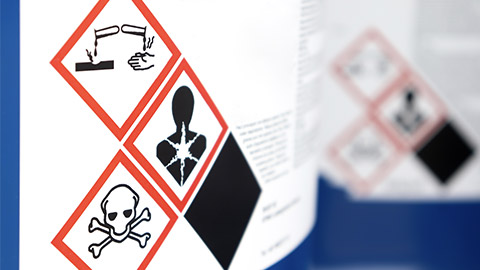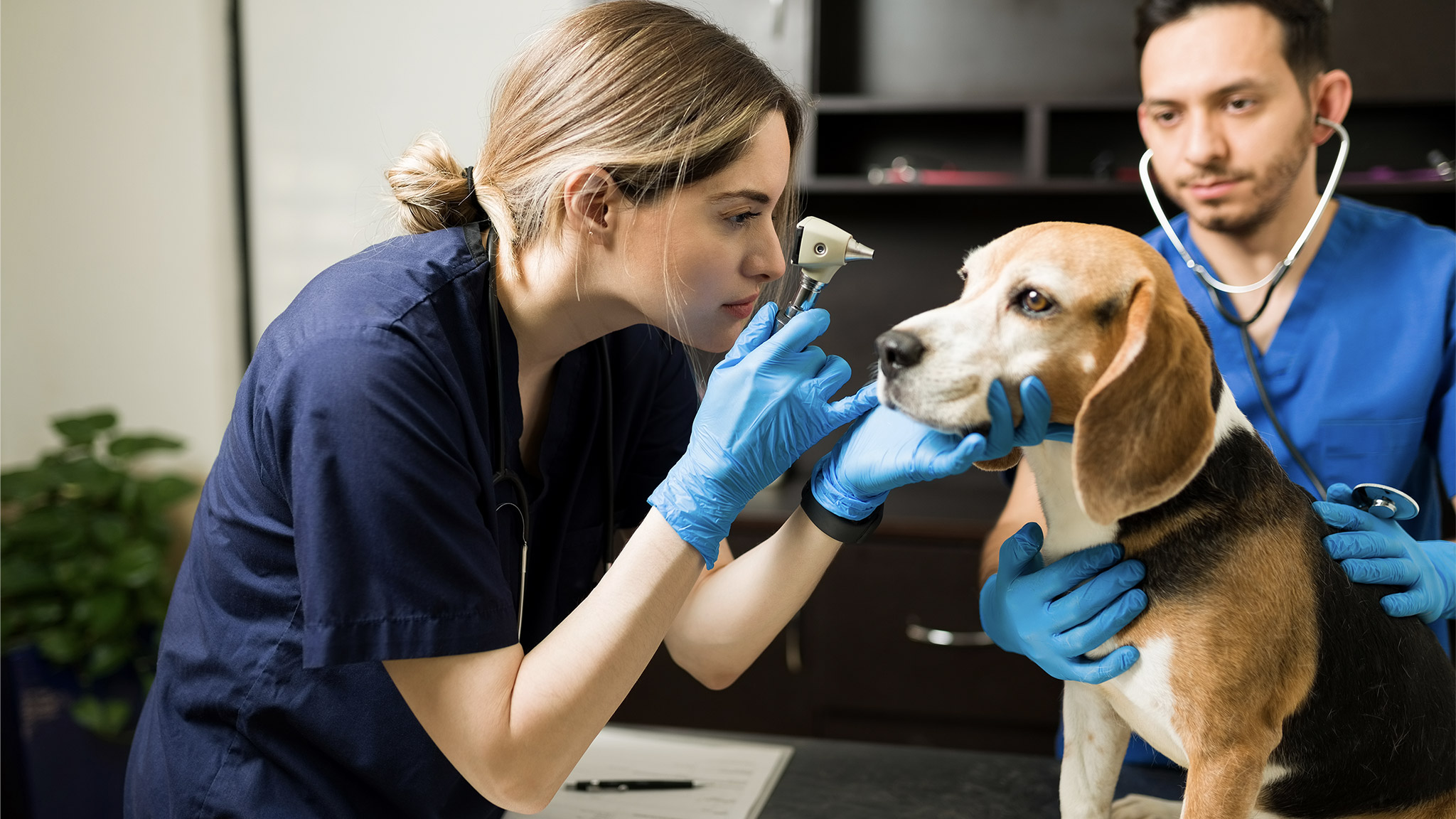When you have secured employment within the Animal Care Industry, you will be expected to abide by a variety of stipulations that ensure animals are cared for ethically, customers/clients receive high-quality products and services, employees appropriately conduct themselves and individual tasks are competently performed.
Other laws protect your rights as an employee; these regulations must be followed by your employer/workplace. This broad collection of stipulations is known as Workplace Governance.
An example of a workplace conduct flow chart is looking at some of the key fundamentals of workplace conduct.
Workplaces are governed by several pieces of legislation known as Acts. Acts can either be administered at the Federal or the State Government level. Acts are further supported by Regulations and Industry Codes of Practice. At the workplace level, there are Codes of Conduct and Policies and Procedures.
- Acts - Formal descriptions of laws created by Parliament (Federal or State). Enforceable by the judicial system (police/courts).
- Regulations - Specific guidelines on how to apply the laws contained in an Act. Not usually enforceable by law in their own right.
- Industry Codes of Practice - Developed by industry associations. Best practice guidelines for the industry. Usually linked to membership or registration and may be audited.
- Workplace Code of Conduct - Specific to individual workplaces. Outlines ethical work practices. Often includes the business Vision and Mission.
- Policies and Procedures - Provide employees with guidelines on completing tasks.
Most of the legislation and regulations relevant to the animal care industry are administered at the State Government level. The Federal Government mainly concerns itself with the welfare of animals being live-exported internationally and export-accredited abattoirs. This means that there is some variety regarding the different stipulations in each state. If your workplace operates over numerous states or territories, ensure you are familiar with the relevant laws in your particular state. Industry codes of practice are more likely to be administered at a national level.
The main Acts (and a broad summary of their contents) that may be relevant to you are outlined in the following table:
| Animal Welfare / Prevention of Cruelty | Welfare principles, Humane slaughter, Research animals, Captivity requirements, Cruelty prevention, and Penalties. |
|---|---|
| Workplace Health and Safety | Employer and employee duty of care, Incident notification, Hazard identification, Inspection, and Enforcement measures. |
| Environmental Protection | Conservation, Wildlife protection, Water, air and noise pollution, Hazardous waste, and Penalties. |
The following map of Australia provides you with various links to each legislation. Click on the icon in your relevant state/territory on the image below; in the pop-up box, refer to the website link to view/download a copy of your local Animal Welfare / Prevention of Cruelty, Workplace Health and Safety, or Environmental Protection legislation.
- Western Australia (WA)
- Animal Welfare Act 2002. The current version of this Act was published in February 2019.
- Occupational Safety and Health Act 1984. The current version of this Act was published in October 2018
- Environmental Protection Act 1986. The current version of this Act was published in May 2020
- Northern Territory (NT)
- Animal Welfare Act 1999. The current version of this Act was published in April 2017.
- Work Health and Safety Act 2011. The current version of this Act was published in February 2020
- Northern Territory Environment Protection Authority Act 2012. The current version of this Act was published in Nov 2018
- South Australia (SA)
- Animal Welfare Act 1985. The current version of this Act was published in December 2017.
- Work Health and Safety Act 2012. The current version of this Act was published in October 2019
- Environmental Protection Act 1993. The current version of this Act was published in January 2020
- Other regulations that support this Act include the Environment Protection Regulations 2009.
- Queensland (QLD)
- Animal Care and Protection Act 2001. The current version of this Act was published in March 2020.
- Work Health and Safety Act 2011. The current version of this Act was published in March 2019
- Environmental Protection Act 1994. The current version of this Act was published in December 2019
- Other regulations that support this Act include the Environment Protection Regulations 2019.
- New South Wales (NSW)
- Prevention of Cruelty to Animals Act 1979. The current version of this Act was published in July 2019.
- Work Health and Safety Act 2011. The current version of this Act was published in March 2020
- Protection of the Environment Operations Act 1997. The current version of this Act was published in December 2019
- Australian Capital Territory (ACT)
- Animal Welfare Act 1992. The current version of this Act was published in April 2020.
- Work Health and Safety Act 2011. The current version of this Act was published in December 2019
- Environmental Protection Act 1997. The current version of this Act was published in August 2019
- Victoria (VIC)
- Prevention of Cruelty to Animals Act 1986. The current version of this Act was published in April 2020.
- Occupational Health and Safety Act 2004. The current version of this Act was published in April 2020
- Environment Protection Act 2017. The current version of this Act was published in January 2020
- Tasmania (TAS)
- Animal Welfare Act 1993. The current version of this Act was published in July 2019.
- Work Health and Safety Act 2012. The current version of this Act was published in January 2013
- Environmental Management and Pollution Control Act 1994. The current version of this Act was published in December 2019
Other applicable legislation/regulations include:
- Privacy (State-administered) - Collection and storage of personal information, as well as use and disclosure of personal information.
- Anti-Discriminatory Laws (State-administered with some elements that come under Federal administration) - Protection against discrimination based on age, disability, race, sex, intersex status, gender identity and sexual orientation
Examples of an Industry Code of Practice include:
- Pet Industry Association of Australia (PIAA) - National Code of Practice.
- Australian Veterinary Association (AVA) - Members Code of Professional Conduct.
- Australian Animal Welfare - Standards and Guidelines (for livestock).

Minimum pay rates and conditions of employment within a particular industry are outlined within a Modern Award. These documents are part of the Fair Work Act 2009 (Federally administered) and the National Employment Standards (Federally administered), which ensure that all workers (in every industry) are treated fairly and paid correctly.
You must be aware of the contents of the Modern Award for your industry or know how to access the necessary information. If you believe you are not being paid correctly or are being treated unfairly, the Fair Work Ombudsman website provides information and support regarding Awards and Employee Entitlements: Fairwork.
The current Modern Award covering people in the Animal Care Industry is the Animal Care and Veterinary Services Award 2020. Although you may be employed under a different type of award if your workplace is in a more specialised field.
You may also be employed under an Enterprise Agreement (EA), also known as an Enterprise Bargaining Agreement (EBA). These agreements are formed at the workplace (enterprise) level between the employer, the employees and often their union. It sets out the terms and conditions of employment. EAs cannot pay less than the minimum wage in the applicable Modern Award, and often, they have terms, conditions, perks and pay rates that are higher than the award.

A Code of Conduct is developed by an individual organisation and often outlines, in one document, how the business maintains its ethical work practices. Examples of ethical work practices are:
- Honesty
- Integrity
- Promise-keeping & Trustworthiness
- Loyalty; Fairness
- Concern for others
- Law-abiding
- Commitment to excellence
- Leadership
- Reputation and morale
- Accountability
Staff are often required to read and agree to abide by the specifications of the Code of Conduct, which may outline behavioural and presentation standards for employees. Smaller organisations may not have a separate Code of Conduct. Rather, individual ethical work practices may simply be embedded into individual policies and procedures.
Case Study
Scenario 1: Dealing with a Difficult Client
A client is upset because their dog was not groomed to their satisfaction. The appropriate conduct would be to listen to the client’s concerns patiently, apologize for any inconvenience, and offer to rectify the issue by re-grooming the dog or providing a discount on the service.
Scenario 2: Handling an Injured Animal
An animal is injured during playtime. The staff member should follow the emergency procedures, which include safely securing the animal, providing first aid if trained to do so, and immediately reporting the incident to the veterinarian and the facility manager.
Scenario 3: Reporting Unethical Behavior
A staff member notices a colleague not following the feeding protocol, which could harm the animals. The appropriate conduct is to report the behaviour to a supervisor while ensuring that the animals receive the correct care in the meantime.
Example: Happy Paws Code of Conduct

Policies and procedures are developed by an individual organisation or even a specific department within that organisation and usually relate to a specific topic or individual task. They provide overarching guidelines and step-by-step processes, respectively.
Watch
The next video is a brief explanation of the difference between Policies and Procedures. This video has material relating to the Office of Children's Guardians but explains Policy vs Procedure.
Policies
Standards or regulations put in place by an organisation. They can be presented in hard or digital copy and should always be accessible within the workplace. Policies often stipulate how the workplace will be implementing and abiding by relevant legislation; for example, a workplace may have a Privacy Policy or an Anti-Discrimination / Equal Opportunity Policy. Generally, workplace policies are implemented by a set of procedures.
Examples of workplace policies that you may be required to abide by are illustrated in the following table.
| Animal Welfare | Includes feeding and watering, animal handling, housing setup and maintenance, exercise, and socialisation needs |
|---|---|
| Environmental Sustainability | This includes the proper use and disposal of potentially hazardous substances and the reduction of energy/water use. |
| Infection Control | Includes clinical waste disposal, handwashing techniques, and aseptic techniques. |
| Cleaning and Hygiene | include cleaning schedules, cleaning techniques, cleaning equipment, and sanitising agents. |
| Workplace Health and Safety | includes the duty of care for employers and employees, evacuation procedures, and hazard/risk control. |
| Anti-Discrimination and Anti Bullying | include the protection of employees regardless of disability, race, gender, religion, nationality, or sexual orientation. |
| Privacy | Includes provisions for the protection of employee and client personal information. |
Procedures
Procedures, otherwise known as Standard Operating Procedures (SOPs), are detailed documents that outline how to complete a task step-by-step safely and effectively. SOPs are easy to follow and include details such as potential health and safety issues and control methods for minimising the risk associated with potential hazards. SOPs ensure that existing staff members are completing workplace tasks with consistency and that all new staff members are aware of organisational standards and requirements. SOPs should be readily available to all staff members and consulted when completing an unfamiliar task.
Task checklists
Checklists are used in the workplace to ensure that certain duties, such as maintenance and/or cleaning tasks, are completed as required. Task lists may be divided into separate checklists based on the frequency with which the task is required to be completed (for example, daily, weekly, or monthly lists), or they can be divided into separate room lists. For example, a veterinary clinic may have separate checklists for tasks to be completed in the surgery room, consulting room, waiting area and so on. When you are working from a checklist, you must consult your workplace SOPs to effectively complete any unfamiliar tasks. You must date and sign your name from a checklist once you complete any task so your colleagues are aware that the task has been completed for that day, week, or month. This ensures others are not wasting time by repeating cleaning or maintenance tasks.
Case Study
See the example below from Happy Paws. The example presents the difference between a Policy, Procedure and Checklist. An example is looking at the Clean and Hygiene documentation.

It is inevitable that, at some point, supplies may start to run low. Supplies in an Animal Care facility can range from but are not limited to any of the following:
Medical supplies
- Bandages
- Medication
- Antiseptics
- Parasite control
- Syringes
- Gloves
- Masks.
Cleaning products
- Disinfectants
- Detergents
- Solvents
- Sanitisers.
Grooming products
- Shampoos
- Conditioners
- Colognes
Food and litter
- Cat litter
- Dry food for overnight stay.
Many of these supplies are crucial to the daily operation and running of an Animal Care facility, it is essential they always remain in stock and accessible. If there is a low quantity of stock, this could have implications on how the clinic or salon operates throughout the day. We can never predict what kind of patients will be admitted and for what reasons. It is essential that all relevant supplies are ready on hand to respond to any type of situation.
The Ark De Noah’s Stock Supply List is an example of what a stock list may look like. The example is very basic, with fictional prices and identification numbers. The clinic or facility you work in will have its own templates that will look different to the example provided.
Stock supply
Staff all have access to the stock supply list and have a responsibility to check the stock supplies, document the quantities, and place orders when necessary.
| Stock Item ID | Stock name | Quantity in stock | Reorder date | Price | Restocked | Comments |
|---|---|---|---|---|---|---|
| B1000 | Bandages | 150 | 22.10.21 | $1.50/item | Yes No | |
| G1000 | Examination gloves | 10 boxes | 22.10.21 | $60.00/item | Yes No | 300 gloves per box |
| SG1000 | Surgical gloves | 10 boxes | 22.10.21 | $33.00/item | Yes No | 100 gloves per box |
| KL1000 | Cat litter | 2 bags | 22.10.21 | $60.00/item | Yes No | 90L bag |
Monitoring supplies
One of the best ways to monitor the supplies is through regular checklists outlining the number of supplies that have been used. The checklist should stipulate the minimum of each supply to indicate when it needs to be replenished. It is also important to ensure medications that have been bought in larger quantities have their dates checked before they are used to ensure they have not expired, and if so, they are correctly disposed of and replenished immediately. If a medication supply is low on stock and within the stipulated use-by date, this medication should be used before opening new stock. An easy way to ensure this is used first before expiration is to store the medication at the front of the place of storage- and apply first in, first out, and last in, last out where possible.
Stocking up methods
Methods of stocking up on supplies vary depending on the clinic’s procedures. For example, a clinic may use a computer system where orders for supplies are recurring each month. Regular audits of when supplies run low can help determine how regularly these orders should be generated. In the event you are running low on any stock, adjustments will need to be made to the orders to ensure they arrive when they are needed and the monthly supply is not compromised. If orders are not adjusted, you end up with too much stock and at risk of waste.
Some clinics may use paper systems to record their supplies on a checklist that is accessible to all staff. When staff notice supply is running low, they will be required to fill out the checklist and submit it to management to place a supply order. With technology evolving, computer-generated checklists and orders are more than likely common practice within most clinics.
A roster is generally a list or plan of hours to be worked by each employee on any given day. Rosters exist to ensure an appropriate number of employees will be available for the duration of an organisation's trading hours. Rosters are generally produced by senior staff members or management in consultation with employees. It is in the best interest of management to ensure a healthy work-life balance can be maintained around an employee's work hours. Clear and detailed rosters ensure there is no confusion, and all employees will be present for their shifts. Rosters may also detail an employee's total number of hours for the period indicated. The roster must follow the requirements of the Animal Care and Veterinary Services award.
Example
Happy Paws Animal Care Facility Roster

Quality Assurance is the process of maintaining compliance with the various sections of workplace governance. Examples of a quality assurance framework include any of the following.
- Internal and external auditing.
- Applying for and maintaining accreditation/registration with an industry association.
- Training sessions and testing/assessment.
- Policy and procedure manuals.
- Employee performance reviews.
Workplaces can manage their Quality Assurance processes internally, or they can work with a specialist consulting company. Some industries are more regulated than others, and therefore, the level of quality assurance may be more stringent, and ramifications for non-compliance may be quite severe.
Record Keeping and Privacy
As part of your duties, you may be required to gather personal information from clients. This may include:
| Type of information | Example |
|---|---|
| Contact Information |
|
| Financial Information |
|
| Animal Profile Information |
|
| Animal Health Care Information |
|
The main consideration you need to abide by regarding record keeping and privacy is the security of this personal information. Always ensure that you do the following:
- Keep paper-based records in locked filing cabinets/drawers.
- Use passwords for computerised programs such as databases and maintain password security.
- Proofread all outgoing correspondence, especially emails, to ensure the recipient is the correct person. If you are sending emails to multiple clients, ensure you have blind copies of all recipients to keep emails private and confidential.

What you will come to learn as you work in the animal care industry is that there are several risks and hazards that come with the job. Animals can sometimes be unpredictable, especially if they are not properly socialized, in pain or ill, or have been subjected to abuse; some may even be wild animals or venomous. Regardless of the circumstance, you must always exercise the appropriate level of caution to ensure your safety and the safety of the animals.
To ensure your safety, it is important you recognise these hazards and risks and appropriately implement and adhere to the controls that are in place to keep you safe.
The following table illustrates the common types (not limited) of hazards, examples and controls that can be implemented for safety.
| Type of hazard | Examples | Control |
|---|---|---|
| Animals |
|
|
| Hazardous substances and chemicals |
|
|
| Radiation |
|
|
| Sharps |
|
|
| Manual handling |
|
|
| Slips, trips, and falls |
|
|
| Biological hazards |
|
|
| Zoonotic diseases |
|
|
| Bodily fluids |
|
|
| Noise |
|
|
| Work postures |
|
|
| Moving parts from machinery |
|
|
